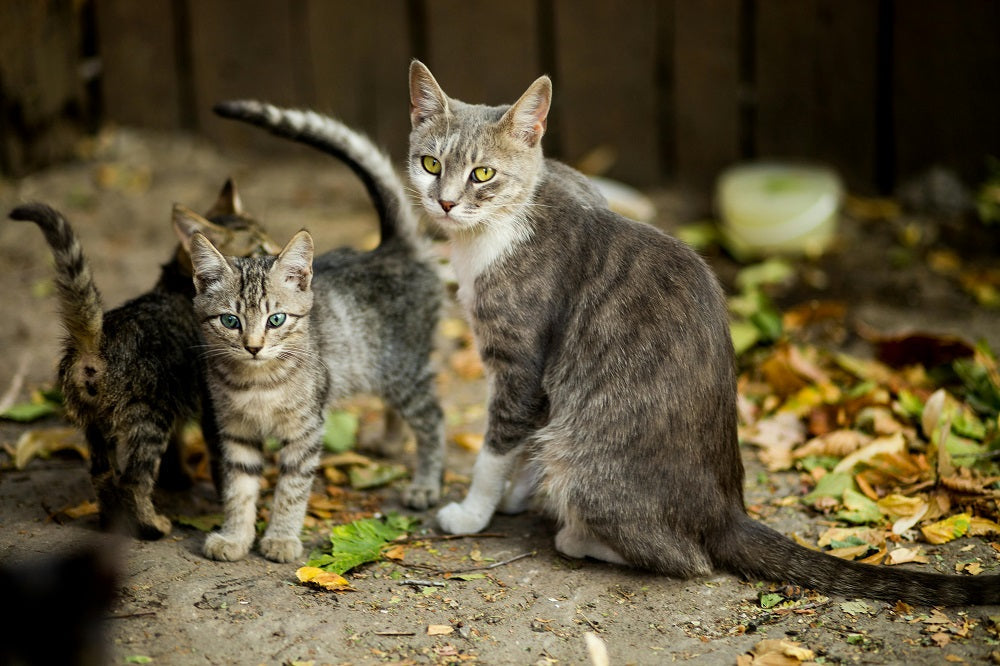In this Article
Your newly adopted cat is processing a flood of sensations. The first week is a decompression window where safety, predictability, and scent continuity matter more than cuddles. Track progress by calm eating, reliable litter habits, normal grooming, and short exploratory forays—not by the calendar. Slow is smooth; smooth becomes fast.
1) Base Camp — The Environment That Heals
Choose a quiet room with a closing door and stable temperature. Cats relax when they can control exposure and retreat to elevated or enclosed refuges. Provide both: a cardboard hide or covered bed, and a shelf/window perch. Keep lighting soft and traffic predictable to help the nervous system cool down after transition.
- Separate paths: place litter, food, and water apart to reduce resource conflict.
- Vertical choice: one higher perch + one low hide satisfy different comfort needs.
- Scent continuity: unwashed bedding; scratcher that collects cheek pheromones.
- Soundscape: soft talk radio or white noise can mask sudden household sounds.
2) Litter Setup That Prevents Problems
Start with fine-grained, unscented clumping in a roomy, uncovered box with low entry (seniors/kittens). Place it along a wall with visibility and at least two ways out to prevent perceived ambush. Scoop twice daily; top up rather than overhauling to keep the smell “familiar but clean.”
- Formula: one box per cat plus one, on different routes through the home.
- Bright, quiet location; avoid rattling appliances or tight dead-ends.
- If accidents happen, add a box and protect routes before changing litter type.
3) Feeding, Hydration & the Calm-Down Loop
Offer the diet used by the shelter/foster for the first 3–5 days; if switching, do it gradually. Split food into 2–4 meals served in shallow bowls (whisker-friendly). Place water away from food and litter; many cats drink more from a wide ceramic bowl or a quiet fountain.
- Hunt–Catch–Eat: precede meals with 5–7 minutes of wand play; end with food to complete the sequence.
- Treat trails: 3–5 high-value treats from hide → bowl encourage confident micro-expeditions.
- Hydration boosters: mix a teaspoon of warm water into wet food; refresh bowls 2× daily.
4) Human Interaction: Predictable, Brief, Positive
Sit at floor level and let the cat approach. Pet only the head/cheeks at first; retreat before the cat feels trapped. Use a “consent test”: stop after 3–5 seconds—if the cat leans in, continue; if not, pause.
- Build rituals: a “hello treat,” a 2-minute play, a 30-second brush, then rest.
- If the cat hides, keep calm company nearby. Presence without pressure builds trust.
- End sessions on a success the cat chose—sniffing, blinking, or sitting within a meter.
5) Day-by-Day Micro-Plan (Days 0–2)
- Arrival: place carrier in base camp, open, step back. No tours. Offer water; small meal later.
- Keep visitors out; keep dogs/children out of base camp. Dim evening lights.
- Log basics: ate? drank? peed/pooped? grooming? You’re building a baseline.
6) Day-by-Day Micro-Plan (Days 3–4)
- Scent swap 1: exchange bedding with household areas or pets (if any).
- Door dining 1: feed on opposite sides of the closed door; distance where both eat calmly.
- Two short wand sessions; end with food; then lights-down quiet time.
7) Day-by-Day Micro-Plan (Days 5–7)
- Site sniff: briefly open the door with a barrier while you tidy; reward calm glances.
- Begin 1–2 minute visual peeks through a cracked door or baby gate; stop at first tension signals.
- Rotate toys (flutter, slither, chase) to keep novelty; log what lowers arousal best.
8) Enrichment: Scratch, Climb, Explore, Rest
Enrichment lowers arousal and channels energy into normal feline outlets. Offer different textures and angles: a sisal post, cardboard lounger, and a doormat for horizontal scratching. Add a paper bag or tunnel for ambush play.
- Scent anchors: place a cheek-rubbed cloth at new thresholds before excursions.
- Confidence reps: hide 3–5 treats across the room to encourage scanning and small victories.
- Rest is training: ensure 16–18 hours of sleep opportunities; invite play later—don’t wake the cat.
Milestones progress from decompression to barrier work, then brief supervised sessions, and finally short, calm house-wide access.
Controlled Visual Contact
Start a see-but-no-touch phase using a cracked door, baby gate, or screen. Keep sessions brief (2–5 minutes), pair them with food, and stop while both cats are calm. Reward de-escalation signals (head turn away, slow blink).
- Door dining 2: move bowls 5–15 cm closer only if both eat confidently.
- Site swap: newcomer explores a safe room while the resident inspects base camp. Swap back after 15–30 minutes.
- Parallel play: two wands, one handler; keep distance; end with treats dropped between you and each cat.
Short Supervised Mingling
Remove the barrier for 5–10 minutes while you’re ready with a toy and treats. Be a tour guide, not a referee: mark calm behavior, redirect excitement with play, and end on a success before fatigue sets in.
- Duplicate resources: at least two litter areas, water points, and scratchers on different paths.
- Traffic design: provide line-of-sight escapes (under a chair, behind a screen) to prevent cornering.
- Cooldown rule: after each session, separate for a nap so arousal can fall below baseline.
Kittens, Shy Cats & Dogs/Kids in the Home
Kittens/adolescents adapt faster but tire quickly—use many micro-sessions and frequent naps. Very shy/under-socialized cats need smaller steps: celebrate eating in your presence, play from the hide, and later approaches. For dogs/young children, set boundaries: a latched gate the cat can hop over and quiet hours for recovery.
- Teach kids a “one-finger greet” to cheeks only; no picking up unless invited.
- For dogs: leash and “mat settle” during first sights; reward the dog for disengaging.
- Add vertical access (cat tree/shelves) to control distance from family traffic.
Common Bumps & Evidence-Based Fixes
- Hiding + low appetite: warm, aromatic food; hand-feed near the hide; reduce visits. Vet call if no eating for 24h.
- Litter problems: add a second box, reduce perfumed cleaners, protect routes from ambush; log time/place of misses.
- Over-arousal after play: stop earlier, switch to foraging toys, scatter treats to reset.
- Growls at barrier: add distance, shorten visuals to 60–90 seconds, increase scent exchanges first.
- Food guarding: separate feeding rooms; return to closed-door dining for a day or two.
Reading the Room
Green: soft body, tail up/neutral, slow blinks, parallel exploring, normal eat/pee/poop/groom. Yellow: freeze-stare, tail swish, ears back, appetite dips near the other pet. Red: chase, ambushes, blood-drawing swats, sustained hissing, litter avoidance, anorexia >24h.
- Green → proceed; keep sessions short and positive.
- Yellow → slow; step back one stage for 24–48h, then retry.
- Red → reset; full separation, scent-only work, and a vet check if appetite/elimination changed.
When to Offer Short, Unsupervised Freedom
Grant house access while you’re home once you’ve seen several days of normal litter/eating, easy recoveries from brief startles, and neutral/curious body language during mingling. Keep doors open, resources duplicated, and your schedule predictable for the next week.
- Rotate resting spots but keep one “scent anchor” bed unwashed for continuity.
- Re-tighten the plan after big changes (guests, renovations, holidays) for 48–72 hours.
- Reinforce good patterns with daily play → food → rest cycles.
Primary Sources (clickable)
Authoritative guidelines and step-by-step references that inform this two-week plan:
- AAFP/ISFM Feline Environmental Needs Guidelines — “Five Pillars”
- AAHA/AAFP 2021 Feline Life Stage Guidelines — medical rule-outs & stress–health links
- Ohio State University Indoor Pet Initiative — Introductions & enrichment
- Humane Society — Introducing Pets (pacing, rewards, managing friction)
- International Cat Care — Bringing a Cat/Kitten into Your Home
- ASPCA — General Cat Care & Adoption Prep
- Jackson Galaxy — Base Camp, Site Swapping & Introduction Flow

